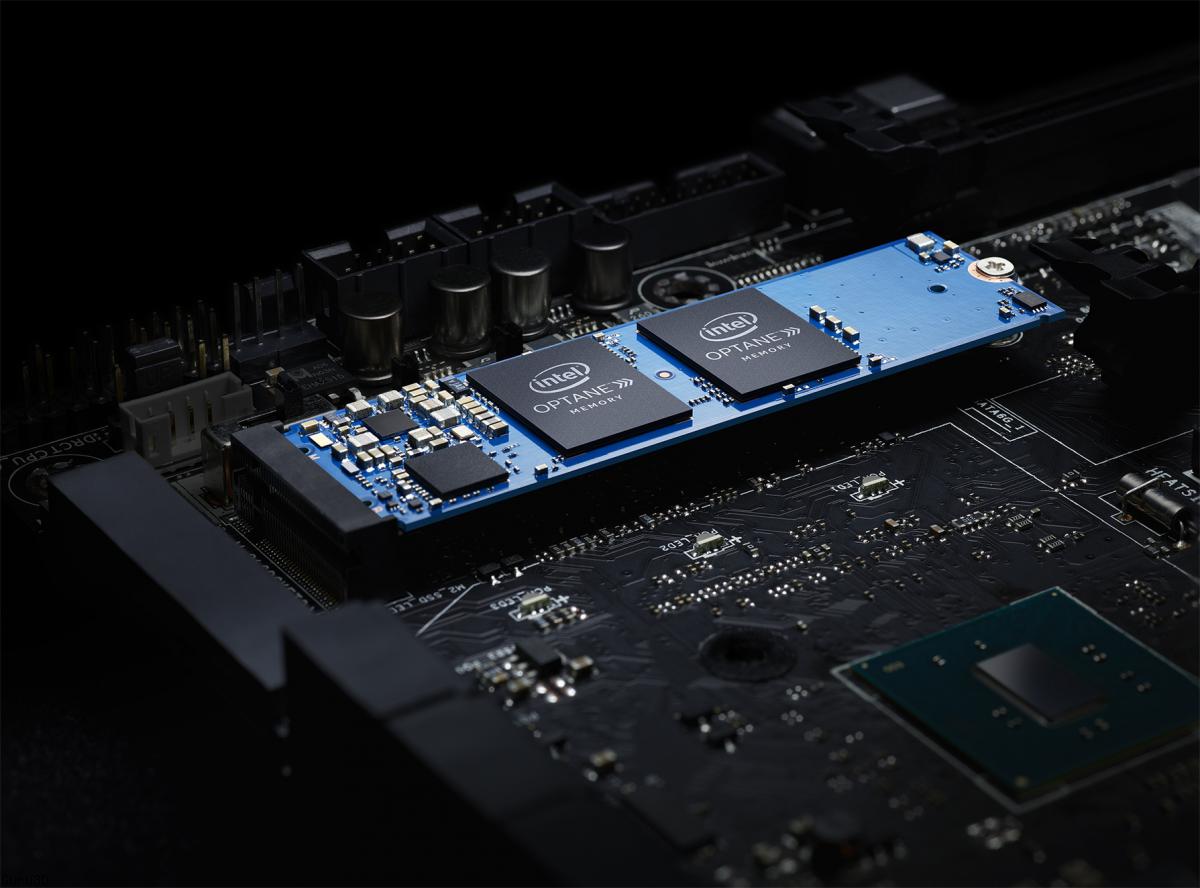You likely already noticed this in the press-release from ASUS. Intel is releasing cache modules based on 3D Xpoint technology. There will be a 16GB and 32GB version. The idea is that you speedup performance of a HDD with expensive Optane cache modules.
Intel claims 2X Faster Boot Time, 28 Percent Faster System Performance, 65 Percent Faster Game Level Loads. In our opinion, just purchase an SSD for your OS and you are looking at the same thing. I had hoped that anno 2017 we'd be past the idea of HDD caches. As such the install base for this product series is going to be intensely small as only the latest and expensive motherboards support Optane. And these buyers will all have SSDs.
The 16 GB Cache module is to cost 45 euro, the 30GB cache will cost you 75 euro. Prices in USD will be roughly the same. BTW it will cost you more, an Optane module (only works with series 200 chipset motherboards) will also eat away pci-e 3.0 x2 lanes and your M2 slot.
Intel - Today’s introduction of Intel® Optane™ memory does just that. Intel Optane memory enables PCs to deliver significantly more performance and faster load times across a broad range of personal computing experiences. It will enable new levels of PC responsiveness for everything from compute-intensive engineering applications to high-end gaming, digital content creation, web browsing and even everyday office productivity applications.
To put this in perspective, on a given day, most people launch 11 apps, and then launch each app seven times.1 With the increased speed and responsiveness of Intel Optane memory in a 7th Gen Intel® Core™ processor-based system, you can power on your computer up to twice as fast and improve overall system performance up to 28 percent faster with storage performance up to 14x faster.2,3 Applications like Microsoft Outlook* will launch up to nearly 6x faster, the Chrome* browser launches up to 5x faster, games launch up to 67 percent faster, and levels load up to 65 percent faster.
How Intel Optane Memory Works
The insight for creating Intel Optane memory was simple: No one likes to wait. Waiting for games, movies, videos, hi-res photos or large files in your Outlook inbox to load is just plain frustrating. And the reason for the wait is also simple: It comes down to data.
The amount of data the average person creates, uses and saves these days is skyrocketing. For example, Windows 10* requires around 20GB disk space and one of the hottest PC games, Grand Theft Auto V* requires approximately 65GB of hard disk space.5 Add to this an ever-increasing number of personal videos and pictures, including 4k content, and the amount of storage the average person needs multiplies quickly.
Today, the way most people are dealing with their storage needs is through traditional hard drives. In fact, 79 percent of desktop PCs still use hard disk drives as the primary storage.6 But while a hard drive may address the storage issue, it also slows down a system and makes it feel less responsive.
That’s where Intel Optane memory comes in. It increases the speed of application, game or large file loading so people don’t have to wait nearly as long. It does this by ensuring the data contained in a PC’s storage is more readily accessible, which means an overall faster, more responsive experience.
How to Get Intel Optane Memory
Intel Optane memory is a member of the new and growing family of Intel Optane technologies built with Intel’s advanced system memory controller, interface hardware and software IP.
Earlier this year, we announced the Intel Optane memory ready program alongside the launch of our 7th Gen Intel Core processors. There are now more than 130 Intel Optane memory ready motherboards available from manufacturers including Asus*, Gigabyte*, MSI*, ASRock* and others.
Today, we are announcing the Intel Optane memory module (16GB and 32GB) for desktops with availability beginning April 24 for customers who want to install them in their Intel Optane memory ready motherboards or systems. In addition, starting in the second quarter of this year, PC manufacturers like HP*, Dell*, Lenovo*, Asus, Acer* and others will begin shipping both consumer and commercial products equipped with Intel Optane memory. More information can be found at Intel.com/optanememory.
This new innovation in memory, with 7th Gen Intel Core processor-based PCs, and other Intel technologies are paving the way for the future of computing. These advancements change the way we interact with our devices and the world around us, from gaming to virtual reality and everyday productivity. It’s never been a more exciting time for the PC industry.



